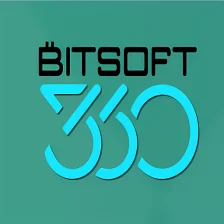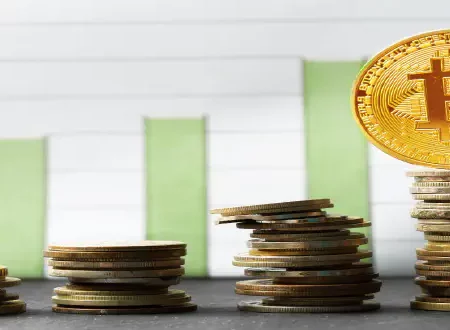Bitcoin, the world’s first decentralized cryptocurrency, has gained incredible popularity in recent years. If you’re new to the world of Bitcoin and wondering how to get started, this comprehensive guide will provide you with all the information you need to acquire your first Bitcoin.
Before getting into the details, it’s important to understand what Bitcoin is. Created by an anonymous person or group of people using the pseudonym Satoshi Nakamoto, Bitcoin is a digital currency that operates on a technology called blockchain. This revolutionary technology allows for secure and transparent peer-to-peer transactions without the need for intermediaries like banks or governments.
To get Bitcoin, you’ll need a digital wallet to store and manage your coins. There are several types of wallets available, including software wallets that you can install on your computer or mobile device, hardware wallets that store your Bitcoin offline, and online wallets that are accessible through a web browser. It’s essential to choose a reputable wallet provider to ensure the security of your funds.
Once you have a wallet, you can acquire Bitcoin through various methods. One common way is to purchase Bitcoin on a cryptocurrency exchange. These platforms allow you to buy Bitcoin using traditional fiat currency such as US dollars or euros. You’ll need to create an account, complete the verification process, and deposit funds into your exchange account to make a purchase.
Another method is to earn Bitcoin through mining. Mining involves using specialized computer hardware to solve complex mathematical problems that verify and secure Bitcoin transactions. Miners are rewarded with newly created Bitcoin for their efforts. However, mining can be resource-intensive and may not be profitable for individual miners without access to expensive equipment and cheap electricity.
Lastly, you can also receive Bitcoin as a form of payment for goods or services. Many merchants and service providers now accept Bitcoin as a legitimate form of payment, giving you the opportunity to earn Bitcoin through your everyday transactions.
Disclaimer: Investing in Bitcoin can be risky, and it’s important to do thorough research and understand the potential risks before acquiring Bitcoin. This guide is for informational purposes only and does not constitute financial advice.
In conclusion, getting Bitcoin involves setting up a digital wallet, choosing a reputable wallet provider, and acquiring Bitcoin through methods such as purchasing on an exchange, mining, or receiving it as a form of payment. With the growing acceptance and adoption of Bitcoin, it’s an exciting time to explore the world of cryptocurrency and potentially benefit from its future growth and potential.
Understanding Bitcoin
Bitcoin is a decentralized digital currency that allows people to send and receive money over the internet. It was created in 2009 by an unknown person or group of people using the name Satoshi Nakamoto. Bitcoin operates on a technology called blockchain, which is a transparent and secure ledger that records all Bitcoin transactions.
How Does Bitcoin Work?
Bitcoin works using a system called peer-to-peer networking. This means that transactions are directly between users without the need for a central authority, such as a bank or government. When a transaction is made, it is broadcasted to the network, and miners validate the transaction and add it to a new block on the blockchain.
Miners are individuals or groups of individuals who use powerful computers to solve complex mathematical problems. By solving these problems, they secure the network and confirm the validity of transactions. In return for their efforts, miners are rewarded with newly created Bitcoins and transaction fees.
Key Features of Bitcoin
Bitcoin has several key features that distinguish it from traditional currencies and payment systems:
- Decentralization: Bitcoin is not controlled by any central authority, making it resistant to censorship and control.
- Security: Bitcoin transactions are secured using cryptography and recorded on a publicly accessible blockchain.
- Anonymity: While Bitcoin transactions are not completely anonymous, they offer a certain degree of pseudonymity.
- Limited Supply: There will only ever be 21 million Bitcoins in existence, which makes it a scarce asset.
- Fast and Global: Bitcoin transactions are typically fast and can be sent or received anywhere in the world.
Uses of Bitcoin
Bitcoin can be used for various purposes, including:
- Purchasing Goods and Services: Many online and physical stores accept Bitcoin as a form of payment.
- Investment: Some people view Bitcoin as a speculative investment and buy it with the hope that its value will increase over time.
- Remittances: Bitcoin can be used for low-cost and fast cross-border money transfers.
- Microtransactions: Bitcoin’s divisibility allows for small transactions, making it suitable for microtransactions and tips.
Risks and Challenges
Despite its advantages, Bitcoin also faces various risks and challenges:
- Volatility: Bitcoin’s price can be highly volatile, leading to potential financial losses.
- Regulation: Governments around the world are still figuring out how to regulate and tax Bitcoin.
- Security: While the blockchain is secure, individual Bitcoin wallets can be vulnerable to hacks and scams.
- Scaling: Bitcoin’s current technology has limitations in terms of transaction speed and scalability.
Conclusion
Bitcoin is a revolutionary digital currency that operates outside of traditional banking systems. It offers decentralization, security, and global accessibility. However, it also comes with risks and challenges that need to be carefully considered. Whether Bitcoin will become the currency of the future or remain a niche technology is still uncertain, but it has undoubtedly made a significant impact on the world of finance and technology.
What is Bitcoin?
Bitcoin is a decentralized digital currency that was created in 2009 by an unknown person or group of people using the name Satoshi Nakamoto. It operates on a peer-to-peer network, which means that transactions can be made directly between users without the need for a central authority, such as a bank or government.
Unlike traditional fiat currencies, such as the US dollar or Euro, Bitcoin is not issued or controlled by any government or financial institution. Instead, it is created through a process called mining, where powerful computers solve complex mathematical problems to validate and record transactions on the blockchain.
The blockchain is a public ledger that contains a record of every Bitcoin transaction. This means that anyone can view and verify transactions, promoting transparency and security. Bitcoin transactions are also pseudonymous, meaning that users can send and receive Bitcoin without revealing their real identities.
Bitcoin has gained popularity due to its potential for financial privacy, security, and its ability to operate outside the traditional banking system. It has also become an attractive investment option for many, with the value of Bitcoin experiencing significant volatility and growth over the years.
Bitcoin can be used for various purposes, including online purchases, remittances, and as an investment. It can be stored in digital wallets, which can be accessed from computers, smartphones, or specialized hardware devices.
It’s important to note that while Bitcoin has many advantages, it also has its risks and challenges. The price of Bitcoin can be highly volatile, and there have been instances of security breaches and fraud in the cryptocurrency space.
In summary, Bitcoin is a decentralized digital currency that operates on a peer-to-peer network. It offers potential advantages such as financial privacy, security, and the ability to operate outside of the traditional banking system. However, it also comes with risks and challenges that users need to be aware of.
How does Bitcoin work?
Bitcoin is a decentralized digital currency that operates on a peer-to-peer network. It works on a technology called blockchain, which is a public ledger that records all transactions made with Bitcoin.
Key Concepts
- Decentralization: Unlike traditional currencies that are issued by central banks, Bitcoin is not controlled by any single entity. It is managed by a network of computers that validate and record transactions, making it resistant to censorship and manipulation.
- Blockchain: The blockchain is a public ledger that stores all Bitcoin transactions. It consists of a chain of blocks, where each block contains a list of transactions and a reference to the previous block. This ensures the security and integrity of the transactions.
- Wallets: Bitcoin wallets are used to store and manage Bitcoin. They come in various forms, such as software wallets, hardware wallets, and online wallets. Each wallet has a unique address, which is used to send and receive Bitcoin.
Transaction Process
When a user wants to send Bitcoin to another user, the transaction goes through the following steps:
- Initiating the transaction: The sender creates a transaction request, specifying the recipient’s Bitcoin address and the amount to be sent. This request is broadcasted to the network.
- Verification: The network of computers, known as miners, validates the transaction request by checking if the sender has sufficient balance and if the transaction follows the rules of the Bitcoin protocol.
- Inclusion in a block: Once the transaction is verified, it is grouped with other transactions into a block. Miners compete to solve a complex mathematical puzzle, and the winner gets to add the block to the blockchain.
- Confirmation: The transaction is considered confirmed when it is added to the blockchain. The more confirmations a transaction receives, the more secure it becomes.
Mining
Mining is the process by which new Bitcoins are created and transactions are validated. Miners use powerful computers to solve complex mathematical puzzles. When a miner solves the puzzle, they are rewarded with a certain amount of newly created Bitcoin.
| Benefit of Mining | Challenge of Mining |
|---|---|
| Earn newly created Bitcoin | Requires significant computational power |
| Secures the network | Increasing competition and energy consumption |
Overall, Bitcoin operates on a transparent and secure system that allows for peer-to-peer transactions without the need for intermediaries. Its decentralized nature and the use of blockchain technology make it an innovative and disruptive form of currency.
Setting Up a Wallet
Before you can start acquiring Bitcoin, you need to set up a Bitcoin wallet. A wallet is a digital application or device that allows you to securely store, send, and receive Bitcoin.
Types of Wallets
There are several types of wallets available, each with its own advantages and disadvantages:
- Hardware Wallets: These are physical devices that securely store your private keys offline. They are known for their high level of security.
- Software Wallets: These are applications that you can install on your computer or smartphone. They offer convenience but may be more vulnerable to hacking.
- Online Wallets: These are wallets that are hosted on websites or online platforms. They are easy to set up and access, but may have security risks.
- Paper Wallets: These are physical copies of your private and public keys. They are considered to be one of the most secure ways to store Bitcoin, but can be easily lost or damaged.
Getting a Wallet
To get a wallet, follow these steps:
- Research and choose the type of wallet that best suits your needs and preferences.
- Visit the official website of the wallet provider or app store for software wallets.
- Download and install the wallet application on your device.
- Follow the instructions to set up your wallet. This may involve creating a unique password and backing up your wallet’s recovery phrase or private keys.
Securing Your Wallet
After setting up your wallet, it is important to take steps to secure it:
- Use strong authentication: Enable two-factor authentication (2FA) to provide an extra layer of security to your wallet.
- Keep your wallet software up-to-date: Regularly update your wallet software to ensure that you have the latest security features and bug fixes.
- Back up your wallet: Create backups of your wallet’s recovery phrase or private keys and store them in a safe place. This will help you recover your funds if you lose access to your wallet.
- Be cautious of phishing attacks: Be wary of suspicious links or emails that ask for your wallet information. Always double-check the URL of the wallet provider before entering your credentials.
Choosing a Wallet Provider
When choosing a wallet provider, consider the following:
- Reputation: Look for wallet providers with a good reputation and positive reviews from the Bitcoin community.
- Security: Ensure that the wallet provider has strong security measures in place, such as encryption and two-factor authentication.
- User experience: Consider the user interface and features offered by the wallet provider. Choose a wallet that is user-friendly and meets your needs.
- Compatibility: Check if the wallet is compatible with your device and operating system.
- Customer support: Look for wallet providers that offer good customer support in case you encounter any issues or have questions.
Conclusion
Setting up a Bitcoin wallet is the first step in getting started with Bitcoin. By choosing the right type of wallet, securing it properly, and selecting a reliable wallet provider, you can safely store and manage your Bitcoin holdings.
Choosing a Bitcoin wallet
When it comes to getting started with Bitcoin, one of the most important decisions you’ll need to make is choosing a Bitcoin wallet. A Bitcoin wallet is a software program that allows you to store, send, and receive Bitcoins securely. There are various types of Bitcoin wallets available, each with its own advantages and disadvantages. Here are some factors to consider when choosing a Bitcoin wallet:
1. Security
- Hot wallets: These wallets are connected to the internet and are more vulnerable to hacking attacks. They are convenient for everyday transactions but carry a higher risk.
- Cold wallets: Also known as hardware wallets, these are offline devices that store your private keys offline. They provide the highest level of security but can be less convenient for frequent transactions.
- Multi-signature wallets: These wallets require multiple signatures to authorize a transaction, adding an extra layer of security.
2. User Experience
- Desktop wallets: These wallets are installed on your computer and give you full control over your private keys. They can be easy to use but require regular software updates and backups.
- Mobile wallets: These wallets are installed on your smartphone and offer convenience for on-the-go transactions. They are typically more user-friendly but may have lower security compared to desktop wallets.
- Web wallets: These wallets are accessed through a web browser and are easy to set up. However, they are more susceptible to hacking and phishing attacks.
3. Functionality
- Basic wallets: These wallets provide the essential features for sending and receiving Bitcoins.
- Advanced wallets: These wallets offer additional features such as built-in exchanges, multi-currency support, and integration with other services.
4. Backup and Recovery
It’s important to consider how wallets handle backup and recovery options. Make sure you understand the process of backing up your wallet and how to recover your funds in case your wallet is lost or damaged.
5. Community Trust
Consider the reputation and trustworthiness of the wallet provider or software developer. Look for wallets that have been reviewed and recommended by the Bitcoin community.
Ultimately, the choice of a Bitcoin wallet depends on your specific needs and preferences. It’s a good idea to try out different wallets and explore their features before committing to one. Remember to always keep your private keys secure and make regular backups to ensure the safety of your funds.
Creating a Bitcoin wallet
Before you can start using Bitcoin, you will need to create a Bitcoin wallet. A Bitcoin wallet is a digital wallet that allows you to store, send, and receive Bitcoin.
Types of Bitcoin wallets
There are several different types of Bitcoin wallets available, each with its own unique features and security measures. Here are some of the most common types:
- Software wallets: These wallets are applications that you can download and install on your computer or mobile device. They offer a good balance between security and convenience.
- Online wallets: Also known as web wallets, these wallets are hosted online by a third-party provider. They are accessible from any device with an internet connection, but they are generally considered less secure than software wallets.
- Hardware wallets: These are physical devices that are designed specifically for storing Bitcoin. They offer the highest level of security, as they store your private keys offline.
- Paper wallets: A paper wallet is a printed piece of paper that contains your public and private keys. It provides an offline way to store your Bitcoin, but it requires careful handling to prevent loss or theft.
Choosing a wallet
When choosing a Bitcoin wallet, it’s important to consider factors such as security, ease of use, and the level of control you want over your funds. Here are some questions to ask yourself:
- How secure is the wallet? Does it use strong encryption and offer features like two-factor authentication?
- Is the wallet user-friendly and easy to navigate?
- Does the wallet support the platforms (e.g., Windows, Mac, iOS, Android) that you plan to use?
- How does the wallet handle backups and recovery?
- What fees are associated with using the wallet?
Getting started with a Bitcoin wallet
To create a Bitcoin wallet, follow these general steps:
- Research and choose a wallet that meets your needs and preferences.
- Visit the official website or app store of the wallet provider.
- Download and install the wallet application on your device.
- Follow the on-screen instructions to set up your wallet, including creating a strong password and securely backing up your seed phrase or private keys.
- Once your wallet is set up, you can generate a Bitcoin address to receive funds, as well as send Bitcoin to other addresses.
Remember to keep your wallet software and devices up to date, use strong passwords, and regularly back up your wallet to protect your Bitcoin and ensure the security of your funds.
Acquiring Bitcoin
There are several ways to acquire Bitcoin, including:
1. Buying Bitcoin
The most common and straightforward way to acquire Bitcoin is by buying it from a cryptocurrency exchange or a peer-to-peer trading platform. Here are the steps to buy Bitcoin:
- Select a reputable cryptocurrency exchange or peer-to-peer trading platform.
- Create an account on the chosen platform and complete the necessary verification steps.
- Deposit funds into your account either through bank transfer or by using a debit/credit card.
- Once your account is funded, navigate to the trading section and select Bitcoin.
- Indicate the amount of Bitcoin you wish to buy and review the transaction details.
- Confirm the transaction and wait for the Bitcoin to be credited to your account.
2. Mining Bitcoin
Mining Bitcoin involves using specialized hardware and software to solve complex mathematical problems. Miners are rewarded with newly minted Bitcoin for their computational efforts. Here is a general outline of the mining process:
- Acquire mining hardware, such as ASIC (Application-Specific Integrated Circuit) miners.
- Install mining software on your computer or specialized mining hardware.
- Connect your mining hardware to the Bitcoin network and join a mining pool if desired.
- Start the mining process and let your hardware solve mathematical problems.
- If successful, you will receive a reward in the form of newly generated Bitcoin.
3. Accepting Bitcoin as Payment
If you offer goods or services, you can choose to accept Bitcoin as a form of payment. To accept Bitcoin, you will need a digital wallet to receive and store the cryptocurrency. Once you have a wallet, you can provide your Bitcoin address or a QR code to your customers for payment.
4. Bitcoin Faucets and Airdrops
Bitcoin faucets and airdrops are websites or applications that distribute small amounts of Bitcoin for completing simple tasks or fulfilling certain conditions. These methods can be a way to acquire small amounts of Bitcoin for free, but they often involve time and effort.
5. Peer-to-Peer Transactions
Lastly, you can acquire Bitcoin through peer-to-peer transactions. This involves finding individuals or businesses that are willing to sell Bitcoin directly to you. Peer-to-peer transactions can be done online or in person, depending on the preferences of the parties involved.
It’s important to note that while acquiring Bitcoin can be relatively simple, it is essential to research and understand the risks associated with the chosen method. Additionally, keeping Bitcoin secure is crucial, so it’s recommended to use a reputable digital wallet and practice good security measures.
Buying Bitcoin from exchanges
One of the most common ways to acquire Bitcoin is by purchasing it from a cryptocurrency exchange. These exchanges allow users to buy, sell, and trade various cryptocurrencies, including Bitcoin. Here are the steps to follow when buying Bitcoin from exchanges:
- Choose a reputable exchange: There are many cryptocurrency exchanges available, so it’s important to choose a reputable and trustworthy one. Look for exchanges that have a good track record, transparent fees, strong security measures, and a wide selection of trading pairs.
- Create an account: To start buying Bitcoin from an exchange, you will need to create an account. This usually involves providing your basic personal information and completing a verification process to comply with anti-money laundering (AML) and know-your-customer (KYC) regulations.
- Deposit funds: Once your account is created and verified, you can deposit funds into your exchange account. Most exchanges support various deposit methods, including bank transfers, credit/debit cards, and cryptocurrency transfers. Choose the method that suits you best and follow the instructions provided by the exchange to complete the deposit.
- Place an order: With funds in your exchange account, you can now place an order to buy Bitcoin. Exchanges offer different order types, such as market orders and limit orders. Market orders are executed instantly at the prevailing market price, while limit orders allow you to set a specific price at which you want to buy Bitcoin.
- Verify the transaction: After placing an order, the exchange will require you to verify the transaction. This is typically done by confirming the order details, including the amount and price of Bitcoin you want to buy. It’s important to review the details carefully before confirming the transaction.
- Receive your Bitcoin: Once the transaction is verified, the exchange will execute the purchase and credit the Bitcoin to your exchange account. You can then choose to keep the Bitcoin in your exchange wallet or transfer it to a personal wallet for added security.
It’s worth noting that cryptocurrency exchanges may have different fees, trading pairs, and user interfaces, so it’s advisable to compare different exchanges and choose the one that best fits your needs. Additionally, always exercise caution when dealing with cryptocurrencies and only invest what you can afford to lose.
Earning Bitcoin through Mining
Mining is one of the primary ways to earn Bitcoin. It involves using powerful computer hardware to solve complex mathematical problems, which helps to secure the Bitcoin network and validate transactions. Miners are rewarded with newly minted Bitcoin for their efforts.
How Mining Works
Mining involves solving cryptographic puzzles to add new blocks to the Bitcoin blockchain. Miners use specialized mining hardware, such as ASICs (Application-Specific Integrated Circuits), to perform the calculations required for mining.
When a miner successfully solves a puzzle, they are rewarded with a certain amount of Bitcoin. This reward serves as an incentive for miners to continue mining and secure the network.
Joining a Mining Pool
While it’s still possible to mine Bitcoin individually, it has become increasingly difficult and resource-intensive. As a result, many miners choose to join mining pools. A mining pool is a group of miners who combine their computing power to increase their chances of earning Bitcoin.
When a miner in a pool successfully mines a block, the reward is distributed among all the participants according to their contribution. Joining a mining pool can provide a more steady and predictable income stream compared to solo mining.
Calculating Mining Profitability
Before starting to mine Bitcoin, it’s essential to consider the costs and potential profitability. Factors to consider include the cost of mining hardware, electricity costs, mining difficulty, and the current Bitcoin price.
Several online calculators are available to estimate potential mining profits based on these factors. These calculators take into account variables such as hashing power, electricity costs, and pool fees to provide an estimate of potential earnings.
Conclusion
Mining is a fundamental way to earn Bitcoin by contributing to the network’s security and transaction validation process. While individual mining can be challenging, joining a mining pool can provide a more accessible opportunity to earn Bitcoin consistently. However, it’s crucial to carefully calculate the costs and potential profitability before entering the mining industry.
Storing Bitcoin
Once you have acquired Bitcoin, it is important to store it safely to protect your investment. There are several options available for storing Bitcoin securely:
1. Software Wallets
A software wallet is a digital wallet that stores your Bitcoin on your computer or mobile device. It is one of the most popular and convenient ways to store Bitcoin. Software wallets can be further categorized into:
- Desktop Wallets: These wallets are installed on your computer and give you full control over your Bitcoin. Examples include Electrum, Exodus, and Bitcoin Core.
- Mobile Wallets: These wallets are installed on your smartphone and can be easily used for everyday transactions. Examples include Mycelium, Bread, and Jaxx.
2. Hardware Wallets
Hardware wallets are physical devices designed specifically for securely storing Bitcoin. They are considered to be the most secure option available. Hardware wallets keep your private keys offline, offering protection against malware and hackers. Examples of popular hardware wallets include Trezor, Ledger Nano S, and KeepKey.
3. Paper Wallets
A paper wallet is a physical printout of your Bitcoin keys. It is generated offline and provides enhanced security. To create a paper wallet, you would need a wallet generator website or software. Once generated, you can print the keys on a piece of paper and store it in a secure location.
4. Online Wallets
Online wallets are web-based wallets that store your Bitcoin keys on a server controlled by a third party. While convenient, they are considered to be less secure compared to other options due to the risk of hacking and loss of control over your keys. Examples of online wallets include Coinbase, Blockchain.info, and Bitpay.
5. Cold Storage
Cold storage refers to storing your Bitcoin offline, typically on a device not connected to the internet. This method provides an extra layer of security but may be less convenient for frequent transactions. Cold storage options include hardware wallets, paper wallets, and even storing your Bitcoin keys on a secure USB or external hard drive.
Choose Your Storage Solution Wisely
When it comes to storing your Bitcoin, it is important to carefully consider your options and choose a storage solution that best suits your needs. Remember to always keep your private keys secure and back up your wallet to avoid the risk of losing your Bitcoin.
Securing your Bitcoin
When it comes to Bitcoin, it’s crucial to prioritize security in order to protect your investments. Here are some steps you can take to secure your Bitcoin:
1. Use a Secure Wallet
Choose a reputable Bitcoin wallet that provides a high level of security. Look for wallets that offer features like two-factor authentication, multi-signature functionality, and encryption.
2. Keep Your Private Keys Offline
Your private keys are essentially the keys to your Bitcoin. Keep them offline and stored in a secure location, like a hardware wallet or a paper wallet. This reduces the risk of them being hacked or stolen.
3. Enable Two-Factor Authentication
Two-factor authentication adds an extra layer of security by requiring a secondary code to access your Bitcoin wallet or account. Use a hardware token or an authenticator app for this purpose.
4. Regularly Update Your Software
Keep your Bitcoin wallet software, operating system, and antivirus software up to date. Software updates often include security patches that help protect against vulnerabilities.
5. Beware of Phishing Attempts
Be cautious of emails, websites, or individuals that request your personal information or Bitcoin wallet details. Always verify the source before sharing any sensitive information.
6. Use Strong Passwords
Create strong, unique passwords for your Bitcoin wallets and accounts. Avoid using common words or simple combinations. Consider using a password manager to securely store your passwords.
7. Backup Your Wallet
Regularly back up your Bitcoin wallet and store the backup in a safe place. This will help you recover your funds in case of loss or damage to your primary wallet.
8. Be Cautious with Public Wi-Fi
Avoid accessing your Bitcoin wallet or making transactions on public Wi-Fi networks. These networks are often insecure and can expose your sensitive information to potential attackers.
9. Educate Yourself on Security Best Practices
Stay informed about the latest security threats and best practices for securing your Bitcoin. Join online communities, read reputable sources, and engage with experts in the field.
By following these security measures, you can enhance the safety of your Bitcoin holdings and reduce the risk of theft or loss.
Using hardware wallets
Hardware wallets are considered one of the most secure ways to store and manage your Bitcoin. These physical devices are designed to keep your private keys offline and protect them from being exposed to potential cyber threats. Here’s a step-by-step guide on how to use a hardware wallet:
- Choose a hardware wallet: There are several reputable hardware wallet brands available on the market, such as Ledger, Trezor, and KeepKey. Research and choose the one that suits your needs.
- Purchase the hardware wallet: Once you have selected the hardware wallet, purchase it from the official website or authorized resellers to ensure that you receive a genuine device.
- Set up the hardware wallet: Follow the manufacturer’s instructions to set up your hardware wallet. This usually involves connecting the device to your computer, creating a new wallet, and generating a recovery seed.
- Securely store the recovery seed: The recovery seed is a series of random words that act as a backup for your hardware wallet. Write down the seed on paper and keep it in a safe place, preferably a fireproof and waterproof location.
- Access and manage your Bitcoin: Connect your hardware wallet to your computer or mobile device whenever you need to access or manage your Bitcoin. Follow the specific instructions provided by the manufacturer to send, receive, or store your Bitcoin securely.
- Keep your hardware wallet up to date: It’s important to regularly update the firmware of your hardware wallet. Check the manufacturer’s website for any available updates and follow their instructions to keep your wallet’s security features up to date.
Using a hardware wallet adds an extra layer of security to your Bitcoin holdings, protecting them from potential hacking attempts and malware. It’s essential to handle your hardware wallet and recovery seed with care to prevent any loss or unauthorized access to your funds.
Using Bitcoin
1. Getting a Bitcoin Wallet
If you want to start using Bitcoin, the first thing you need is a Bitcoin wallet. A Bitcoin wallet is a software or hardware device that allows you to store, send, and receive Bitcoin securely. There are various types of wallets available, including mobile wallets, desktop wallets, web wallets, and hardware wallets. Choose a wallet that suits your needs and follow the instructions to create a new wallet.
2. Receiving Bitcoin
To receive Bitcoin, you need a Bitcoin address. A Bitcoin address is a unique identifier consisting of a string of alphanumeric characters. You can share your Bitcoin address with others to receive payments. There are multiple ways to get a Bitcoin address:
- Create a new address in your Bitcoin wallet
- Use an online Bitcoin address generator
- Get a Bitcoin address from a Bitcoin exchange or payment processor
Once you have a Bitcoin address, you can provide it to others who want to send you Bitcoin. You can receive Bitcoin by sharing your address through email, chat, or by scanning a QR code.
3. Sending Bitcoin
To send Bitcoin, you need the recipient’s Bitcoin address. Enter the recipient’s address in your Bitcoin wallet and specify the amount you want to send. Some wallets allow you to include a fee for faster transaction processing, while others automatically set the fee based on the current network congestion. Double-check the recipient’s address before sending the Bitcoin to ensure accuracy.
4. Securely Storing Bitcoin
Bitcoin should be stored securely to prevent unauthorized access or theft. Here are some security best practices:
- Use a hardware wallet for storing large amounts of Bitcoin
- Enable two-factor authentication on your Bitcoin wallet
- Keep backups of your wallet and store them in secure locations
- Use strong, unique passwords for your wallet and enable encryption if available
- Be cautious of phishing scams and only download wallet software from trusted sources
5. Using Bitcoin for Transactions
Bitcoin can be used for various transactions, including online purchases, donations, and peer-to-peer transfers. Many online merchants and service providers accept Bitcoin as a form of payment. To make a payment, simply select the Bitcoin payment option at the checkout process and follow the instructions provided by the merchant or service provider. Some wallets also offer features like QR code scanning for easy payment initiation.
6. Tracking Bitcoin Transactions
Every Bitcoin transaction is recorded on a public ledger called the blockchain. You can use various blockchain explorers to track the progress of your transactions or to verify the balance of a specific Bitcoin address. Simply enter the transaction hash or Bitcoin address into the explorer to view the transaction details.
7. Bitcoin Security Considerations
While Bitcoin provides a high level of security, it’s important to follow security best practices to protect your holdings:
- Be cautious when sharing your Bitcoin address or private keys
- Enable multi-factor authentication whenever possible
- Regularly update your Bitcoin wallet software to apply security patches
- Monitor your transactions regularly to detect any suspicious activity
- Keep your Bitcoin wallet software and devices free from malware and viruses









This comprehensive guide on how to get Bitcoin is absolutely helpful for beginners like me who are interested in investing in cryptocurrency. The article provides a step-by-step process, explaining everything from creating a digital wallet to different methods of acquiring Bitcoin. I appreciate the detailed information on various platforms such as exchanges and peer-to-peer marketplaces. It helped me understand the pros and cons of each option and make an informed decision based on my preferences. Besides, the article covers essential security measures and emphasizes the importance of keeping digital assets safe. As a female reader, I found the instructions easy to follow, even for someone with little technical knowledge in this area. One of the highlights is the section on mining Bitcoin. Although I might not have the necessary resources to engage in mining right now, the article provided a clear overview of the concept and its significance. Overall, this guide is a fantastic resource, providing valuable insights into the world of Bitcoin and helping me navigate the process of acquiring it. I feel more confident and ready to take the first steps towards investing in this fascinating digital currency.
This comprehensive guide on how to get Bitcoin is truly eye-opening! As a female reader, I appreciate how it breaks down the process into easy-to-understand steps. The article starts by explaining the basics of Bitcoin and its significance in today’s digital world. It then guides readers through different ways to acquire Bitcoin, such as buying from exchanges, mining, and receiving it as payment. I particularly liked the section on buying Bitcoin from exchanges. The author provides useful tips on choosing a reliable exchange and emphasizes the importance of securing one’s cryptocurrency. It’s reassuring to know that there are reputable platforms out there that prioritize users’ safety and data protection. The article also discusses the concept of Bitcoin mining, which was quite intriguing to me. Although it seems like a complex process, the guide simplifies it by explaining how miners solve mathematical problems to verify transactions and earn Bitcoin as a reward. The step-by-step instructions make it seem accessible even to beginners like me. Furthermore, I appreciate how the guide covers alternative ways to acquire Bitcoin, such as receiving it as payment for goods or services. This shows that Bitcoin is becoming more mainstream and can be integrated into our daily lives. It’s inspiring to see how technology like this can revolutionize traditional financial systems. Overall, this comprehensive guide provides valuable information for anyone interested in getting Bitcoin. It’s well-written, easy to follow, and covers various methods to suit different preferences and needs. As a female reader, I feel empowered to explore the world of cryptocurrency and take advantage of the opportunities it presents. Kudos to the author for a job well done!
This comprehensive guide on how to get Bitcoin is incredibly helpful for someone like me who is new to the world of cryptocurrency. The step-by-step instructions make it easy to understand the process and navigate through the different options available. I appreciate the detailed explanations of various methods such as mining, buying from exchanges, and earning through online platforms. The guide also addresses common concerns such as security and legal aspects, which give me more confidence in venturing into the world of Bitcoin. Overall, this article provides a comprehensive overview and serves as a great starting point for anyone interested in getting their hands on Bitcoin.
I found this comprehensive guide on how to get Bitcoin really helpful! As a female reader, it provided me with clear and easy-to-understand steps to enter the world of cryptocurrencies. The article starts with explaining what Bitcoin is and why it’s worth exploring. It then outlines different ways to acquire Bitcoin, such as buying it on cryptocurrency exchanges, mining, or even earning it through various online platforms. The guide also provides useful tips on choosing the right wallet to store the Bitcoin securely. I appreciate that the author included potential risks and scams to be aware of, ensuring that readers like me can make informed decisions. Overall, this guide serves as a great introduction to getting started with Bitcoin, and I feel more confident in taking my first steps into this exciting and rapidly evolving world of digital currencies. Thanks!
This article on “How to Get Bitcoin: A Comprehensive Guide” is incredibly informative and helpful. As a woman interested in delving into the world of cryptocurrency, I found the step-by-step instructions and explanations easy to understand and follow. The article starts with the basics, such as what Bitcoin is and how it works, which was great for someone like me who was new to the concept. I particularly appreciated the detailed explanations of different ways to acquire Bitcoin. The article covered everything from buying Bitcoin on exchanges to mining and earning it as payment. The inclusion of pros and cons for each method allowed me to make an informed decision based on my preferences and resources. Moreover, the article addressed the security concerns around Bitcoin and provided valuable tips for securing one’s cryptocurrency. This was especially important to me as a female reader, as safety is always a top priority. Overall, this comprehensive guide left me feeling confident and excited to begin my Bitcoin journey. I would highly recommend it to anyone interested in getting started with Bitcoin, regardless of their level of experience or gender.